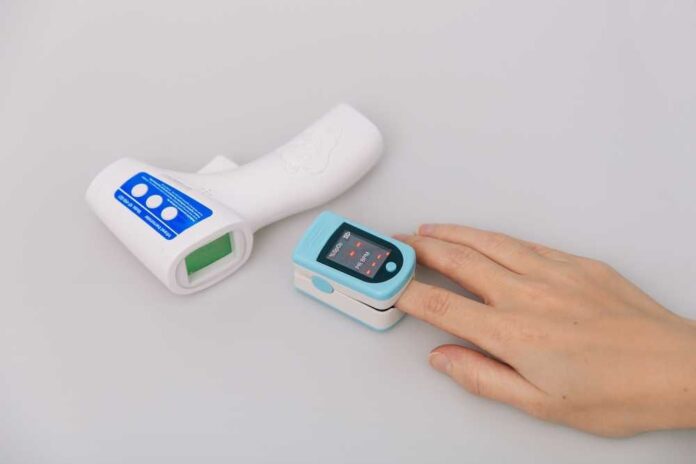
As a respiratory infection, COVID-19 can cause difficulty breathing. And when breathing becomes difficult, your body won’t get the oxygen it needs to function properly.
If your organs and tissues become starved for oxygen, it can lead to severe and potentially life-threatening consequences.
With COVID-19 infections, drops in blood oxygen levels are a critical indicator of worsening health outcomes and the need for invasive mechanical ventilation.
Measuring Blood Oxygen Levels
Your doctor will likely measure your blood oxygen levels to ensure your body is getting the oxygen it needs. This involves a device called a pulse oximeter—a small sensor on your fingertip. The sensor uses light to measure how much oxygen is in your blood.
A normal blood oxygen level is 95% or above. People living with COPD or other chronic respiratory conditions may have lower-than-average blood oxygen levels even when feeling well.
Blood oxygen levels below 90% are dangerously low and may require emergency supplemental oxygen through intubation.
Do You Need A Pulse Oximeter At Home?
Pulse oximeter devices are available for purchase online and in some stores. Your doctor may give you one for at-home use if you have COPD or another chronic respiratory condition.
For infections like COVID-19, a pulse oximeter device may help you and your doctor track your condition and decide when you need emergency medical attention. Early detection of significant drops in blood oxygen levels can help you avoid serious health complications.
If you get a pulse oximeter, it’s important to understand how to use it and what the reading means. Read the instructions on your device carefully, and be sure to ask your doctor about anything you don’t understand.
If your blood oxygen level reading is below 90%, contact your doctor or go to the emergency room immediately.
How Reliable Are Home Pulse Oximeters?
Pulse oximeter devices are generally considered reliable. However, there may be some errors in the reading, especially if you have darker skin. Because the device uses light to measure blood oxygen levels, darker skin tones may give higher readings than the true value.
For increased accuracy, taking multiple readings over time is typically recommended. This allows you to see general trends rather than rely on any number. Often, it is more important to know whether or not your blood oxygen levels are dropping rather than the exact number.
Also, some users may incorrectly attach the device or misinterpret the reading. This can lead to false readings that are either too high or too low.
If you’re concerned about the accuracy of your device, talk to your doctor. They may be able to recommend a more reliable device or help you interpret your readings.






















